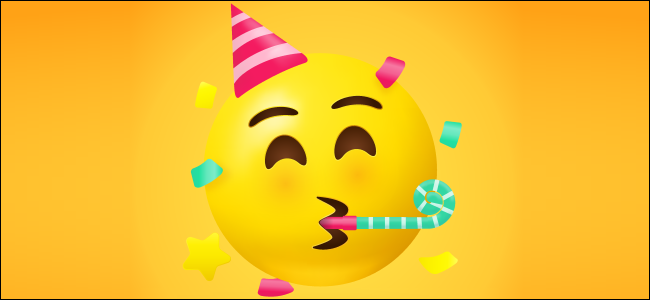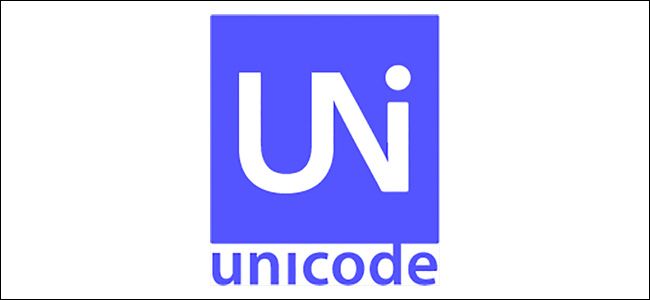Quick Links
Anyone can think up and submit an emoji. If you're willing to do the leg work, your own emoji could become a part of every messaging app, social platform, and operating system in the world. Here's how to become part of internet history.
How Did Emoji Start?
Most people believe that emoji (sometimes pluralized as "emojis" instead) are a recent invention, but they go back quite far. The idea of single characters that represented faces or objects dates back to the late 90s to early 2000s in Japan, where mobile phones included smiley faces and icons directly in the font. Before this, people used emoticons such as ":-)" or "^_^" that use symbols to create faces.
However, emoji as an official and universal method of communication started in 2010. This was when emoji were added to Unicode, the global standard for encoding and text in computing systems. The Unicode Consortium, the body responsible for maintaining Unicode, accepted a proposal from a team of engineers from Google and Apple to standardize these expressive characters.
Since then, emoji have become a pop culture phenomenon and a universal way of communication. In 2015, Oxford Dictionary declared the "face with tears of joy" emoji (😂) the word of the year.
How Do I Make One?
The Unicode Consortium has established a rigorous process to add new emoji into Unicode. Every year, the Unicode Consortium hears out proposals for new emoji. After a comprehensive screening, the best proposals will then be approved, turned into emoji, and released to the public.
Since the submission process is public, literally anyone in the world can make an emoji. In 2019, Jay Peters from The Verge published a piece about his experiences proposing two emoji: the yawning face and the waffle. Both have since been implemented in Unicode and are standard in most messaging apps and operating systems.
Coming Up With An Emoji Idea
Before you start brainstorming, you should check if your idea has already been pitched. The Unicode Consortium keeps a running list of all emoji requests. This sheet contains both successful proposals and rejections, as well as the reasons they were rejected. While your idea already having been submitted isn't an automatic disqualifier, there's a chance your pitch was recently approved from someone else's idea.
Figuring out a concept for your proposal isn't as simple as making an icon for something that hasn't been turned into an emoji yet. The Unicode Consortium has a set of selection factors that they use to evaluate if a proposal is worth being turned into an actual emoji.
The consortium divides these into two: factors for inclusion and factors for exclusion. Here are the considerations for inclusion:
- Compatibility: Is the emoji already widely in use on other social platforms? If it is, its chances of being in Unicode increase.
- Expected Usage Level: How much will your proposed emoji actually be used? There are a few measures that can be used as evidence of the likely usage level. These include frequency of use, the potential for multiple usages, the ability to use it in a sequence with other emoji, and whether or not breaks new ground.
- Distinctiveness: The potential emoji should have a distinct visual that is recognizable in emoji format.
- Completeness: The emoji should fill in a gap present in the current emoji library.
On the other hand, some of the factors for exclusion include the presence of repeated requests and petitions, being overly specific or not specific enough, and the potential for it to be a fad. All of these can make your proposal a weak candidate to become an emoji.
Submitting the Proposal
Once you find a great idea that covers the selection factors, it's time to make a proposal. The Unicode Consortium has specific guidelines on how to write your proposal. Yours should have the following:
- Identification: The name of your emoji, such as "Party Popper Emoji" 🎉 or "Face With Rolling Eyes Emoji" 🙄.
- Images: Sample images of your emoji proposal in both color and black and white.
- Sort Location: Which category your emoji would fall under, such as "Smileys and People" or "Food and Drink."
- Selection Factors: A run-down of each of the selection factors for inclusion and exclusion mentioned above.
For all of the selection factors, you should be able to provide substantial evidence and ideas. This is particularly true with frequency, where you're required to submit screenshots of Google Trends and Google Image Trends results.
If you need more help, all of the past successful emoji proposals are stored on the Unicode website. You can look through these for inspiration or ideas to improve your proposal.
After you finish making your document, you need to submit it to the Unicode Consortium. They have instructions for where and how to e-mail your proposal, as well as formatting and file type requirements. Review these to avoid having your emoji rejected.
Approving and Implementing Your Emoji
Depending on when you submit your emoji, it can be a very long process. There are three steps in the approval process before your emoji becomes standard in Unicode:
- Initial Proposal: During this time, an Emoji Subcommittee (ESC) within Unicode reviews all pitches, and sends them for endorsement to the Unicode Technical Committee or UTC.
- UTC Consideration: The entire committee then reviews the filtered set of proposals from the ESC. Accepted proposals are turned into "Provisional Candidates." In the 2nd quarter of every year, some provisional candidates are turned into "Draft Candidates."
- Final Approval: Once the Unicode finally decides to implement the emoji, it becomes a "Final Candidate." These are then sent to tech companies so they can create designs. They later get published into Unicode, and apps begin supporting it.
All in all, it can take well over a year from your initial pitch before you can use your emoji in WhatsApp or iMessage. However, it's a short amount of time considering that you'll be making a mark on the entire world.
If your emoji is picked for inclusion, it'll end up on every modern device that supports emoji in the world: iPhones, Android phones, Windows PCs, Macs, and even Linux PCs.



